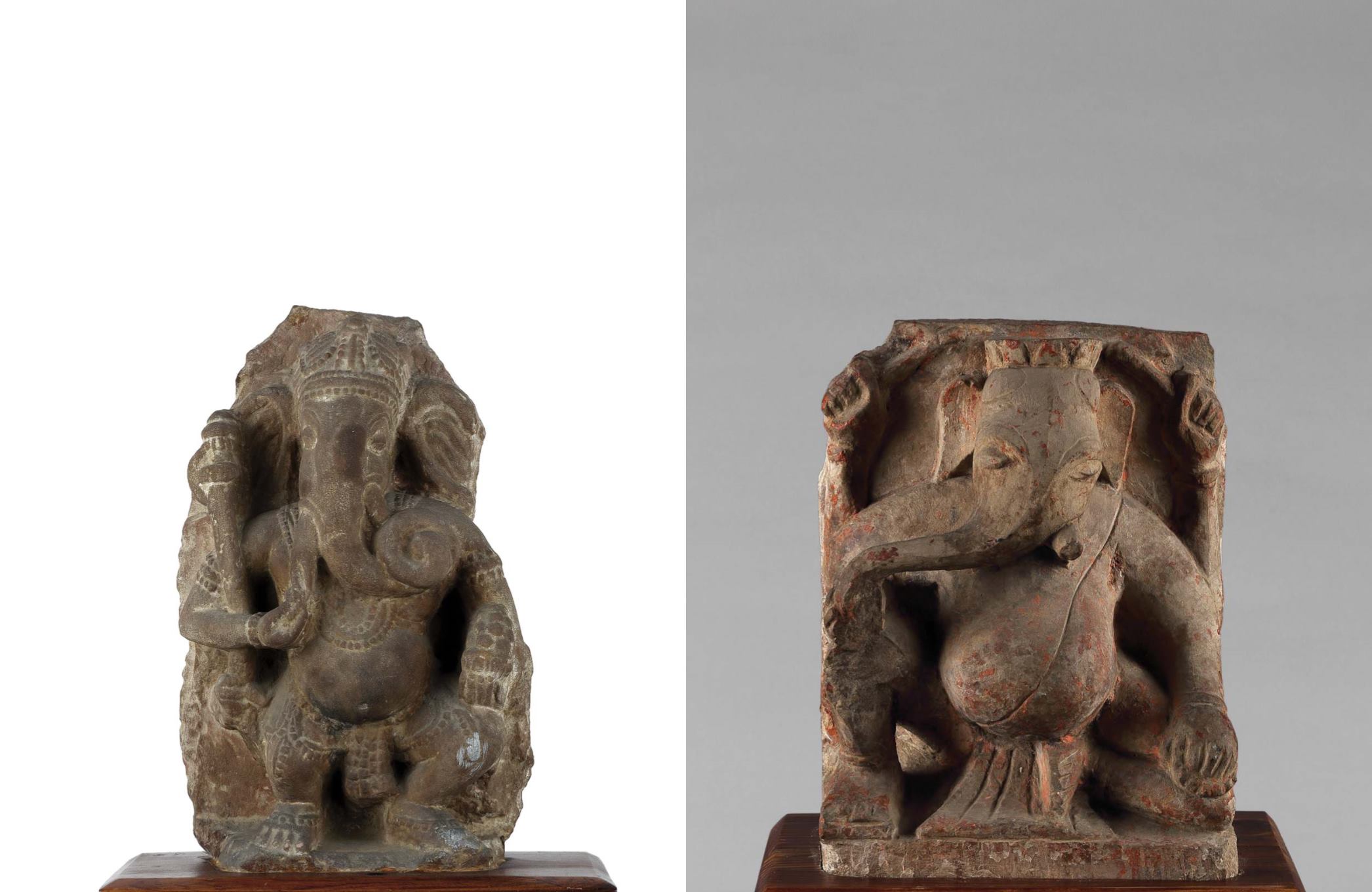

22
23
T
his sculpture shows a dancing Ganesha, or
Nritya‒
Ganapati
. This form of Ganesha could be seen in
temples in North and Central India by the 8
th
century.
Ganesha holds a battle‒axe in his rear right hand. In his primary
right hand, he holds what resembles a tusk, and in his left hand,
he holds a plate of
modaks
. Ganesha’s rotund body gracefully
adopts the
kshipta
pose, where the right foot is raised to
form the
kunchita
step, and the left leg is bent to support the
weight of the body. His plump legs, arms and torso bring out
his childlike, endearing persona. He wears an elaborate crown,
and other ornaments are carved in detail. Ganesha’s trunk coils
elegantly to his left, and both his tusks are prominent.
12
DANCING GANESHA
MADHYA PRADESH OR RAJASTHAN,
CIRCA 10
TH
/11
TH
CENTURY
Sandstone
17 in (43.2 cm) high
$ 12,500 ‒ 15,625
Rs 8,00,000 ‒ 10,00,000
NON‒EXPORTABLE REGISTERED
ANTIQUITY
PROVENANCE
Property from an Important Family Collection
13
GANESHA
RAJASTHAN, CIRCA 17
TH
CENTURY
Sandstone
11.25 in (28.8 cm) high
$ 3,910 ‒ 5,470
Rs 2,50,000 ‒ 3,50,000
NON‒EXPORTABLE REGISTERED ANTIQUITY
PROVENANCE
Property from an Important Family Collection


















